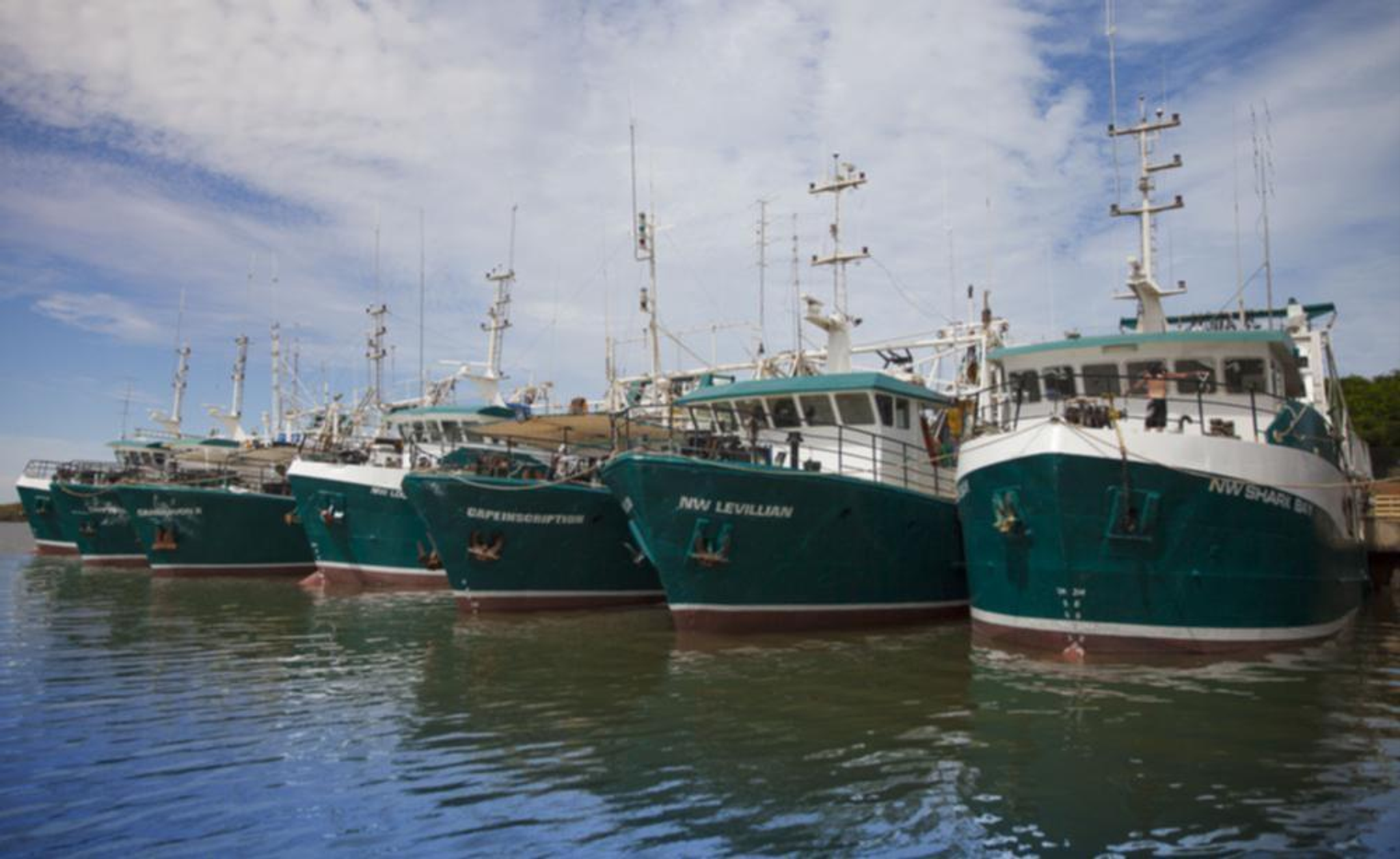Mark James Inman
Vessel Name: MW Murchison
Mark James Inman
Drowned at sea; Body never recovered
25 July 2006

NW Fleet Carnarvon
Mark James Inman was a 42-year-old Aboriginal employed on the scallop trawler, MW Murchison. At the time of his death, he was living in Carnarvon with his partner, Gail Randell. Inman had seven children and his partner two children.
Inman had never been on a fishing boat before and was excited at the prospect of employment on the MW Murchison. He obtained the employment through Workbase in Carnarvon which finds jobs for registered job seekers referred to them by Centrelink.
Rodney Houghton, the skipper at the time of the MW Murchison, had approached Workbase some weeks before as he was quite desperate to get deckhands to work on the vessel.
Inman was subsequently interviewed by Houghton and offered him employment under a Share Fishing Voluntary Agreement.
The MW Murchison was one of a fleet of trawlers owned by Nor-West Seafoods. The catch from these trawlers went to the Nor-West Seafoods processing factory in Carnarvon.
The MW Murchison was owned by Tennereef Pty Ltd who had a Share Fishing Joint Venture Agreement with Rodney Houghton. They took 79% of the value of the catch with Houghton netting 21%. From this, Inman was entitled to 5% of Houghton’s net income from the sale of the catch, about 1% of the total proceeds.
Inman was one of five crewmen on the MW Murchison which left from Carnarvon on 19 July for fishing grounds in Shark Bay. On 26 July it was noticed that the vessel’s engine had blown a seal, and it was decided to fish back towards Carnarvon where repairs would be made.
In the early hours of the morning Inman was working at the port quarter of the vessel trying to reach the lazy line rope which attached the net to the main deck winch. To reach the rope which was above his head Inman stepped up onto the deck hatch and then onto the bulwark gunwhale. He lost his balance and fell from the gunwhale into the water. Cam Lien, a deckhand with no previous experience on a commercial vessel, immediately raised the alarm. Inman initially attempted to hold on to the vessel but appears to have eventually let go and drifted away.
Once alerted, Houghton proceeded to the wheelhouse, disengaged the forward gear to neutral, turned off the auto pilot and pressed the ‘event mark’ on the vessel’s navigation system. According to the vessel’s navigation records it was about 4.05am.
Crew members then threw various items overboard for Inman to use as flotation devices: plastic fishing crates, a tyre, milk bottle along with a grappling hook with a rope attached. Unfortunately, the hook did not land close enough for Inman to catch it. Houghton threw out a life ring but after a few minutes Inman drifted out of the lit area of the vessel and into the darkness. The crew were no longer able to see him. They could hear him calling out but eventually there was no reply to their calls. The last call heard from Inman said that he was exhausted and could go on no more. The vessel drifted for about 3½ to 4 hours, but Inman could not be found. A subsequent search with 25 vessels and an aircraft failed to locate Inman. The police dive squad searched an area totalling 360,000 square metres and found Inman’s boots and belt. Cut marks on his belt were later examined and determined to be consistent with a shark bite.
An inquest into the death of Inman was held in the Carnarvon Coroner’s Court on 28 to 30 October 2008 and noted several concerning safety features of the events which took place at the time, and which were reviewed during the inquest.
Four recommendations were made by the Coroner, Alastair Hope, as well as being satisfied that the training and supervision of Inman, as a new employee with no commercial fishing experience, was seriously inadequate.
Recommendation 1
All commercial fishing vessels involved in fishing at night carry search lights suitable for person overboard and be ready and available for immediate use while at sea.
There was no operating search light or spotlight on MW Murchison, the handheld search light was not compatible with the 24-volt 2 pin polarised low voltage base socket located in the wheelhouse wall.In addition the cord was too short and could not be stretched any further than the wheelhouse door.
Recommendation 2
All commercial fishing vessels to carry PFDs and be available to all crew members.The Skippers to ensure that these are worn when appropriate and particularly by very inexperienced crew and when working in hazardous situations.
MW Murchison was carrying ‘Solas’ life jackets on board, these jackets are bulky and unsuitable for fishing tasks on deck hence not usually worn. Less cumbersome jackets are recommended to be available and mandatory on board.
Recommendation 3
All Skippers of fishing vessels operating at night be required to demonstrate the ability to perform a ‘Williamson’ turn at night and pick up a person overboard to obtain the required Certificate of Competency.It should take place as part of a simulated rescue operation and not only be a theoretical exercise.
The purpose of a ‘Williamson’ turn is to return the vessel as close to its original track as possible to pick up the person.From data collected from the navigation system it appeared that Houghton did not perform a ‘Williamson’ turn although in evidence he claimed that he did.
Recommendation 4
Consideration be given to reviewing the operation of the Occupational Safety and Health Act 1984 so that Act has application to the fishing industry in Western Australia and provides some protection for persons working on fishing vessels.
It should apply to Skippers so they have the responsibility to provide a safe working environment for their crews; and
Also apply to vessel owners entering into Share Fishing Agreements to require them to ensure that their vessels are supplied with appropriate safety devices and their vessels provide a safe working environment for their crews.
The deceased did not enjoy the protections of the Occupational Health and Safety Act because he was not a ‘worker’ for the purposes of the Act.Given the fact that Nor-West Seafoods managed the fleet which was in turn owned by Tennereef, the catch was provided to Nor-West Seafoods who arranged the sale, Tennereef had a Share Fishing Joint Venture Agreement with the Skipper Houghton who engaged the crew members under a Share Fishing Voluntary Agreement, who exactly was responsible for making sure the vessel was carrying out appropriate safety checks?
Inman received 5% of the Skipper’s net income (if any) from the sale of the catch.Within the Act he was not classed as a ‘worker’. In addition his only direct relationship was with Houghton.
The Coroner found that Mark James Inman’s death arose by way of accident. He stated that he felt the circumstances in which Inman fell from the vessel were unsatisfactory and resulted from an inadequate approach to safety procedures on the vessel. He also stated that the response to the emergency was unsatisfactory and it was inexcusable that although the vessel was engaged in night fishing there was no working search light on board.
It is heartwarming to know that over the years these very recommendations have become real and the fishing industry has become more aware of safety on board commercial fishing vessels.
Perhaps some small consolation to the family of Mark Inman to know that from his death a conversation was started to ensure the safety of employees on commercial vessels and an Act that included some protection to persons working in the fishing industry.
